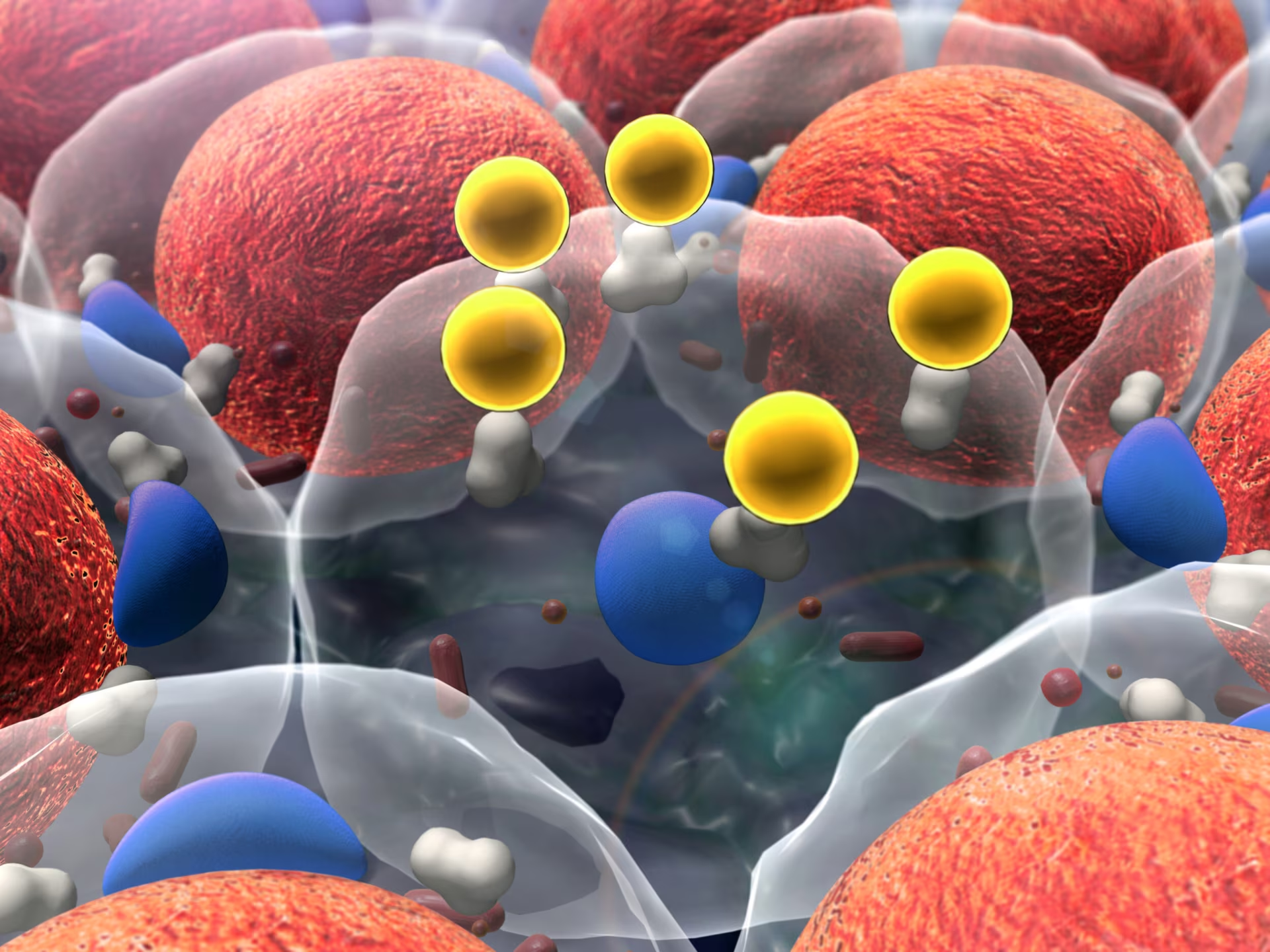However, statin-based interventions are unlikely to correct problems of triglycerides and HDL, whereas the use of fibrates has a stronger effect on the atherogenic dyslipidemia and might even produce significant LDL reduction in some patients.
However, statin-based interventions are unlikely to correct problems of triglycerides and HDL, whereas the use of fibrates has a stronger effect on the atherogenic dyslipidemia and might even produce significant LDL reduction in some patients. Thus, physicians dealing with the common phenotype of insulin resistance are presented with a practical problem – the use of statins primarily to control LDL, or the use of fibrates primarily to control triglycerides and HDL.Well-designed outcome studies published in the last few years have shown the value of fibrate therapy in patients with obesity, the metabolic syndrome, and diabetes, particularly when LDL levels are below 130mg/dl and when triglycerides and HDL levels are only modestly abnormal.
Mechanism of Action of Fibrates
Gemfibrozil and fenofibrate are the fibrates currently approved for use in the US and, in addition to these, bezafibrate and ciprofibrate are also available in Europe. The fibrates have been in use since the late 1960s, and for about 25 years their mode of action was not known. The relatively recent understanding of the molecular mechanisms of fibrate action1 represents one of the biggest breakthroughs in cardiovascular pharmacology. Fibrates are now known to alter the transcription of several genes involved in lipoprotein metabolism and other pathways.2 Fibrates are able to activate gene transcription because they are synthetic ligands for peroxisome proliferator-activated receptor (PPAR)−α, a ligand-activated transcription factor and member of the nuclear hormone receptor superfamily. PPARα transmits signals from lipid-soluble factors, such as fatty acids, eicosanoids, hormones and vitamins, to genes in the nucleus by binding to DNA within specific response elements (PPREs).1 Effects of Fibrates on Plasma Lipids
A number of factors influence the response of plasma lipid levels to treatment with fibrates, including the baseline lipoprotein profile, the genetic and environmental factors underlying the hyperlipidemia, and the drug used. Fibrates are clearly the drug of choice for treatment of severe hypertriglyceridemia (TG >500mg/dl) or chylomicronemia syndrome (TG >1,000mg/dl), conditions associated with an increased risk of pancreatitis.3 Patients with severe hypertriglyceridemia frequently have low levels of LDL cholesterol, and treatment with fibrates may raise their LDL cholesterol levels by increasing intravascular lypolysis of very low-density lipoproteins (VLDL) through lipoprotein lipase, with resultant accumulation of newly formed LDL (‘beta-shift’ phenomenon). However, in the setting of more moderate hypertriglyceridemia (TG<500mg/dl), fibrates produce 30% to 50% reductions in serum triglycerides, 15% to 25% increases in HDL cholesterol, and have variable effects on LDL depending on the molecule used. Gemfibrozil has neutral LDL effects, whereas fenofibrate may produce LDL reductions ranging from 5% to 35%.4 An important aspect of LDL metabolism in patients with triglyceride and HDL problems is the accumulation of small, dense LDL. Fenofibrate decreases small, dense LDL particles, which are more susceptible to oxidation and more ‘atherogenic’ than larger, more buoyant LDL particles.5,6 Several non-traditional risk factors are also influenced by fibrates. Fenofibrate decreases plasma levels of Lp(a) by 7% to 23%,4,7 reduces fibrinogen,8 and lowers levels of serum uric acid to the point that it may have therapeutic effects on gout.9
Effects of Fibrates on the Vessel Wall
The pleiotropic effects of fibrates may result in direct antiatherogenic effects in the artery wall. PPARα is expressed by all of the major cell types in atherosclerotic lesions, including macrophages, endothelial cells, and vascular smooth muscle cells (SMCs).10 PPARα may act as a negative regulator of the vascular inflammatory gene response by antagonizing the activity of the transcription factors nuclear factor-κB (NF-κB) and activating protein- 1 (AP-1).11,12 Fibrates have been reported to inhibit tumor necrosis factor alpha (TNF-α)-induced expression of vascular cell adhesion molecule-1 (VCAM-1) by endothelial cells.13 Therefore, fibrates may decrease the recruitment and adhesion of mononuclear cells to endothelial cells, a crucial step in the initiation of atherosclerotic lesions. Activation of PPARα by fibrates has also been reported to influence cholesterol homeostasis inside the macrophage by inducing expression of ATPbinding cassette transporter (ABCA-1) and scavenger receptor class B (SR-B1), drivers of cholesterol efflux out of the cell.7 Furthermore, fenofibrate inhibits activation of vascular smooth muscle cells14 and lowers C-reactive protein (CRP) levels to a degree similar to that previously reported for statin therapy.15,16
Combination Therapy of Fibrates with Statins
The risk of clinically important myositis and rhabdomyolysis (defined as muscle pain with creatinine phosphokinase (CPK) levels >10 times the upper limits of normal) is the major concern in lipid-lowering therapies including the use of statins as monotherapy or in combination regimens. Recent evidence indicates that gemfibrozil causes increased levels of statins in the blood.17,18 In contrast, fenofibrate appears to have little effect on the pharmacokinetic properties of simvastatin, atorvastatin, cerivastatin, or rosuvastatin, which may explain why there are fewer reports of significant interactions between fenofibrate and statins.18 As a consequence, the ADA has issued new recommendations that give preference to fenofibrate over gemfibrozil in combination with statins. Support to this position was given by the LDS trial, stopped in 2001 because of the withdrawal of cerivastatin from the market, which showed the absence of toxicity from fenofibrate taken in combination with the most dangerous of statins. Fibrates for Primary Prevention of CHD
In the Helsinki Heart Study,19,20 more than 4,000 men with moderate coronary heart disease (CHD) risk were enrolled to receive 1,200mg of gemfibrozil or placebo for five years. Gemfibrozil reduced triglycerides by 35% and LDL by 11%, while raising HDL by 11%.The effect on outcomes was a very significant 34% reduction in CHD events. Interestingly, intervention with gemfibrozil was more beneficial in subjects with high triglycerides and low HDL than in the treated group as a whole (71% versus 34% CHD risk reduction). Also, diabetic subjects benefited more than the normoglycemic individuals from treatment with gemfibrozil (68% versus 34% CHD risk reduction). In line with these results, overweight subjects (body mass index (BMI) >26) experienced more risk reduction from gemfibrozil compared with lean subjects (BMI <26), whereas the most striking risk reduction was produced by overweight or obese subjects (BMI >30) with high triglycerides and low HDL.21 These data support the notion that the patient type most amenable to cardiovascular (CV) risk reduction by fibrate therapy is an overweight patient, with metabolic syndrome or diabetes, and the atherogenic dyslipidemia.
Fibrates for Secondary Prevention of CHD
The Veterans Administration HDL Intervention Trial (VA-HIT) evaluated the effect of gemfibrozil in CHD patients with type 2 diabetes or the metabolic syndrome and low HDL.22 The baseline lipids included: LDL 111mg/dl, HDL 32mg/dl, and triglycerides 164mg/dl. Five years of therapy with gemfibrozil resulted in an average 8% increase in HDL, a 24% reduction in triglycerides, and no changes in LDL levels. This was accompanied with a very significant reduction in coronary and cerebrovascular events (22% and 31%, respectively).23 The intervention produced a number needed to treat (NNT) of about 20 for coronary events, which compares favorably with the results of the statin trials. In addition, the effect of fibrate therapy on CHD rates among the nearly 700 diabetic subjects enrolled in this study was particularly large and apparently superior to the effects of statins in the same patient type (see Figure 1). Among the non-diabetic sub-group of this study, the best predictor of CHD risk reduction afforded by fibrate therapy was fasting plasma insulin level, with subjects in the lowest quartile experiencing no benefits, and those in the highest quartile experiencing the most significant benefits.24 These data support the value of fibrate therapy in the metabolic syndrome patient.







